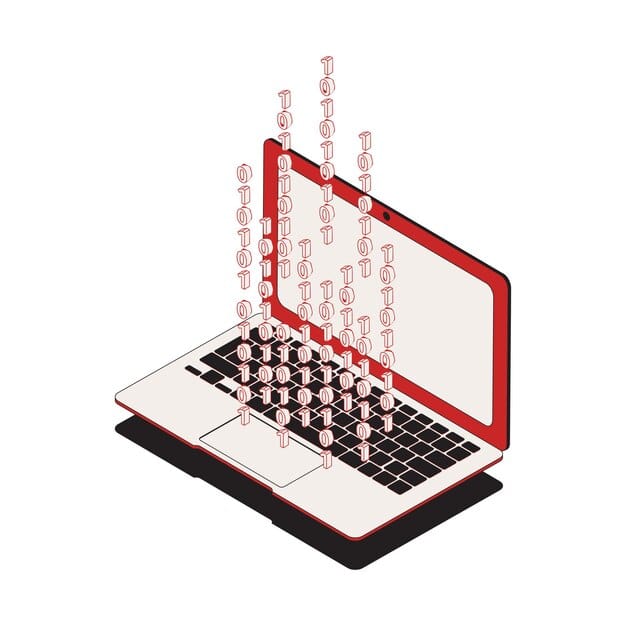Master the Book Blurb: Selling Your Story in 2025

Mastering the art of the book blurb is paramount for authors aiming to captivate readers and boost sales, especially as digital publishing evolves, requiring concise, compelling summaries that stand out in crowded marketplaces.
For any author, the journey from manuscript to market is fraught with challenges, but few are as critical as mastering the Author Spotlight: The Art of the Book Blurb: Writing Compelling Summaries That Sell in 2025. This seemingly small block of text, often overlooked or rushed, is in fact your most potent selling tool. It’s the elevator pitch, the first impression, and often the deciding factor for a potential reader browsing countless titles online or in a bookstore. In an increasingly competitive landscape, where attention spans dwindle and digital storefronts demand instant engagement, a well-crafted blurb isn’t just an advantage—it’s an absolute necessity.
Understanding the Blurb’s Evolving Role
The book blurb, traditionally found on the back cover of a physical book, has undergone a significant transformation in the digital age. Its core purpose remains the same: to entice, inform, and convert. However, the platforms and contexts in which blurbs are encountered have diversified, leading to new demands on their structure and content.
No longer confined to a single format, blurbs now appear on e-commerce sites like Amazon, Goodreads, and various other online book retailers. This digital presence means blurbs are often read on smaller screens, alongside competitive titles and reader reviews. They must work harder and faster than ever to grab attention, often within the first few lines visible without requiring a click or scroll. This shift necessitates a strategic approach, moving beyond mere plot synopsis to a more marketing-driven piece of copy.
The Psychology Behind a Purchase Decision
Understanding why readers commit to a purchase is crucial for crafting an effective blurb. It’s not just about liking the premise; it’s about connecting with the potential experience the book offers. Readers search for escape, knowledge, emotional resonance, or challenge. A successful blurb taps into these underlying desires, creating a brief but potent emotional connection.
- Promise of Transformation: Readers often choose books that promise to transport them, educate them, or offer a new perspective. The blurb should hint at this deeper value.
- Curiosity and Conflict: Introducing a compelling question, a central conflict, or an intriguing character dilemma immediately hooks a reader’s interest.
- Emotional Resonance: Using evocative language that suggests the emotional journey within the book fosters an instant connection, whether it’s suspense, joy, sorrow, or wonder.
- Relatability: Even in fantasy or science fiction, elements of human experience or universal themes can make a story feel more accessible and appealing.
The blurb is effectively a subtle psychological play. It’s an invitation, not a command, encouraging the reader to delve deeper. It sparks interest by revealing just enough to create anticipation, but not so much that it spoils the journey. Crafting this delicate balance requires a nuanced understanding of storytelling and marketing.
Adapting to Different Platforms
While a core blurb should exist, smart authors develop slight variations for different platforms. Amazon might favor keywords and bolded phrases for scanning, while a Goodreads blurb might lean more into community and genre conventions. A personal website blurb could be slightly longer, offering more detailed insights for dedicated fans.
The key is consistency in the core message but flexibility in presentation. Short, punchy sentences often perform best online, as do clear indicators of genre and target audience. The goal is to maximize visibility and appeal across every digital touchpoint, understanding that each platform has its own unwritten rules for reader engagement.
Deconstructing the Anatomy of a Killer Blurb
A compelling book blurb is not simply a summary; it’s a carefully constructed piece of persuasive prose designed to lead a reader from curiosity to purchase. It follows a particular structure, leveraging key elements to maximize impact and engagement. In 2025, this structure is more refined than ever, focusing on efficiency and emotional resonance.
Breaking down a blurb into its fundamental components reveals the strategic thinking behind its effectiveness. From the initial hook to the final call to action, each part serves a specific purpose in guiding the reader’s decision-making process.
The Irresistible Hook (First Line or Two)
The opening lines of your blurb are arguably the most important. They are the reader’s first true engagement with your story outside of the title and cover. This hook must be captivating, genre-appropriate, and immediately relevant to the core conflict or stakes of your narrative.
- Intriguing Question: “What if justice demanded a price no one was willing to pay?”
- Bold Statement: “Her perfect life was a lie, and the truth would kill her.”
- Compelling Scenario: “In a world where magic is outlawed, one girl holds the key to its forbidden power.”
- Character Introduction with a Twist: “He was just a detective, until the case of his life became his own.”
The goal is to stop the reader’s scrolling or browsing, forcing them to pause and read the next line. This requires precise word choice and a clear understanding of what makes your story unique. Avoid generic openings; instead, strive for something that immediately establishes tone and raises a question in the reader’s mind.
Introducing the Protagonist(s) and Their Plight
After the hook, quickly introduce your main character(s) and their central problem or goal. This isn’t a character sketch, but rather a brief, compelling introduction that reveals who they are and what they’re up against.
Focus on their core desire or the terrifying obstacle they face. What makes them unique? What are the stakes for them personally? This sets the stage for the conflict and allows the reader to begin forming a connection with the character. Highlight their vulnerability, their strength, or the impossible choice they must make.

The Central Conflict and Rising Stakes
This is the heart of your blurb. What is the main problem the protagonist faces? What stands in their way? Crucially, what are the consequences if they fail? The stakes must be clear and compelling, whether they are personal, global, or existential.
Use active verbs and vivid language to describe the conflict. Avoid spoilers but hint at the challenges and twists. The blurb should escalate the tension, showing the reader that this isn’t just a simple problem, but a profound struggle with significant repercussions. This is where you convey the genre and the emotional core of your story.
Hinting at the Journey/Promise
Without giving away the ending, your blurb should suggest the journey the reader will undertake. What kind of emotional ride can they expect? Is it a race against time, a quest for truth, an epic adventure, or a heartwarming tale of self-discovery?
This section reinforces the genre and tone, setting expectations for the reader. It might pose a rhetorical question or offer a tantalizing glimpse of the ultimate challenge or reward. The key is to leave the reader wanting more, eager to discover how the story unfolds and whether the protagonist succeeds.
The Call to Action/Cliffhanger
The final line or two should be impactful. This isn’t a direct “Buy Now” but a psychological nudge. It often takes the form of a provocative question, a final unsettling thought, or a powerful statement that makes the reader feel compelled to find out what happens next.
This is your last chance to secure the reader’s attention and push them towards the purchase button. It should resonate with the main themes of the book and leave a lasting impression. Ensure it aligns with the overall tone and promise of your story.
Strategies for Crafting Magnetic Blurbs in 2025
Beyond the structural elements, specific strategies can elevate a blurb from good to irresistible. These involve language choices, understanding your audience, and leveraging the competitive landscape of 2025. It’s about being sharp, concise, and deeply attuned to what makes readers click “add to cart.”
The marketplace is saturated, and attention is a scarce resource. Therefore, every word in your blurb must earn its place. Mastering these strategies ensures your summary cuts through the noise and connects directly with your ideal reader.
Embrace Active Voice and Strong Verbs
Passive voice slows down the pace and weakens the impact. Instead, use active voice and powerful verbs that convey energy and direct action. “The truth was discovered by him” is far less compelling than “He unearthed a truth that could shatter worlds.”
Strong verbs create vivid imagery and convey emotion without needing extensive descriptions. They make your blurb feel dynamic and immediate, mirroring the pace and excitement of your story. Audit your blurb for any weak verbs or passive constructions and replace them with more vigorous alternatives.
Show, Don’t (Just) Tell
While a blurb is by nature a summary, it can still imply emotion and conflict rather than explicitly stating them. Instead of saying “She was scared,” describe her trembling hands or the chilling silence that surrounds her. This creates a more immersive experience for the reader, even in just a few lines.
This principle extends to revealing the stakes. Instead of “The world was in danger,” a more effective approach might be, “With every passing hour, the ancient city crumbled, and so did her last hope.” This shows the danger through its effect and consequences.
Identify and Emphasize Your Unique Selling Proposition (USP)
What makes your book different from the thousands of others in its genre? Is it a unique twist on a classic trope, an unusual setting, a groundbreaking character, or a fresh perspective? Your blurb needs to highlight this USP without giving away the entire plot.
Think about what would make a reader choose your book over a similar title. This often comes down to a compelling “What if?” question or an unexpected combination of elements. Articulate this distinction clearly and concisely, making it the bedrock of your blurb’s appeal.
Target Your Ideal Reader with Specific Language
Who is your book for? A romance reader has different expectations than a hard sci-fi enthusiast. Use language, tone, and genre keywords that resonate with your target audience. If your book contains dark themes, your blurb shouldn’t sound lighthearted. If it’s a cozy mystery, avoid overly violent language.
Research successful blurbs in your specific subgenre. What tropes do they lean into? What language do they use? Mimicking the style of blurbs that appeal to your target demographic can significantly increase your chances of capturing their attention and encouraging a purchase.
The Blurb in the AI Age: Leveraging Technology Wisely
As 2025 unfolds, artificial intelligence is increasingly integrated into every aspect of content creation, including writing book blurbs. While AI tools can be valuable assets, relying on them exclusively without human oversight risks creating generic or formulaic copy. The key is to leverage AI as a helper, not a substitute for genuine creativity and nuanced understanding.
Embracing AI tools intelligently can significantly enhance your blurb-writing process, saving time and providing fresh perspectives without sacrificing originality or the human touch that truly sells a story.
AI as a Brainstorming Partner
AI tools can be excellent for generating initial ideas, different angles, or even specific word choices. If you’re stuck on a particular phrase or struggling to find the right hook, an AI can provide a multitude of suggestions. Think of it as an infinite brainstorming session at your fingertips.
- Generate Multiple Hooks: Ask AI to create 10 different opening lines for your story based on key plot points.
- Explore Synonyms and Adjectives: Use AI to find more impactful words to describe emotions, settings, or character traits.
- Identify Genre Tropes: AI can help pinpoint common tropes in your genre, allowing you to either lean into them effectively or subvert them intentionally in your blurb.
- Analyze Competing Blurbs: Feed successful blurbs into an AI and ask it to identify patterns, strengths, and common elements, giving you insights into what resonates with readers in your genre.
This approach allows you to quickly sift through numerous possibilities, refining your own ideas rather than passively accepting an AI’s output. It turns a creative block into a productive exploration.
Refining and Optimizing with AI Assistance
Once you have a draft, AI can help with refinement. Tools can check for conciseness, readability, and even suggest improvements for emotional impact. Some advanced AI models can analyze your blurb for clarity and coherence, ensuring it flows well and makes sense to a reader unfamiliar with your story.
Use AI to:
- Condense Sentences: Ask it to shorten long sentences without losing meaning.
- Improve Readability Scores: AI can suggest simpler vocabulary or sentence structures to appeal to a broader audience.
- Check for Repetition: Ensure you’re not using the same words or phrases too frequently.
- Evaluate Emotional Tone: Some AI can analyze the emotional tone of your blurb (e.g., suspenseful, romantic, humorous) and suggest adjustments to better align with your book’s genre.
Always remember that AI suggestions are just that—suggestions. Your authorial voice and understanding of your story should always be the final filter. The goal is to make your blurb as polished and impactful as possible, using AI as a powerful editing and optimization tool.

Avoiding the “Robotic” Trap
The biggest pitfall of over-reliance on AI is the creation of bland, generic, or “robotic” blurbs. AI excels at pattern recognition and data synthesis, but it often lacks true nuance, emotional depth, and the unique voice that comes from human creativity. A blurb written entirely by AI may feel soulless, failing to truly connect with a reader on an emotional level.
To avoid this, always infuse your blurb with:
- Your Unique Voice: Make sure the blurb sounds like it came from you, not a machine.
- Specific, Evocative Details: AI can sometimes generalize; ensure your blurb contains specific, memorable details that are unique to your story.
- Genuine Emotion: The best blurbs evoke feelings. Ensure your blurb doesn’t just state facts but hints at the emotional journey.
- A Human Touch: Read your blurb aloud. Does it sound natural? Does it spark genuine curiosity in you? If not, it might need more human refinement.
Think of AI as your co-pilot, not the pilot. It can help navigate and optimize, but the destination and the overall journey are still under your creative control. The most effective blurbs in 2025 will be those that skillfully blend technological assistance with undeniable human artistry.
Testing, Refining, and Iterating Your Blurb
Crafting a compelling blurb is not a one-and-done task. It’s an iterative process that requires testing, gathering feedback, and a willingness to refine based on performance. What sounds good in theory might not resonate with your target audience, and the market is constantly shifting. In 2025, continuous optimization is key to maximizing your book’s visibility and sales.
Approach your blurb like a living, evolving piece of marketing copy. It should be subject to the same level of scrutiny and refinement as your manuscript itself. This commitment to ongoing improvement can significantly impact your book’s success.
Gathering Constructive Feedback
Before launching, share your blurb with trusted readers, critique partners, or even a small focus group. Ask specific questions:
- What genre do you think this book belongs to based on the blurb?
- Who do you think is the main character? What is their main problem?
- Does this blurb make you want to read the book? Why or why not?
- Is anything confusing or unclear?
- What emotions does the blurb evoke?
Be open to criticism and different perspectives. What seems obvious to you as the author might not be clear to a fresh pair of eyes. Constructive feedback is invaluable for identifying areas where your blurb might be falling short or miscommunicating your story’s essence. This early feedback can save you from costly marketing missteps down the line.
A/B Testing Your Blurb
Online platforms offer invaluable opportunities for A/B testing different blurb variations. This involves presenting different versions of your blurb to different segments of your audience and measuring which performs better in terms of click-through rates or sales conversions. While direct A/B testing on major retailers can be complex, authors can utilize ad campaigns (e.g., Facebook Ads, Amazon Ads) to test blurbs.
Create two or more distinct blurbs, perhaps varying the hook, the emphasis on character vs. plot, or the call to action. Run small ad campaigns using each blurb. Monitor which ad generates more interest or leads to more initial clicks to your book’s page. This data-driven approach gives objective insights into what resonates most effectively with your audience.
Monitoring Performance and Adapting
Once your book is live, keep an eye on its performance. Are readers clicking on your book page but not purchasing? This could indicate a blurb that isn’t converting effectively. Are review snippets or reader comments highlighting aspects of your book that your blurb isn’t emphasizing? These are opportunities for refinement.
Don’t be afraid to change your blurb! The digital landscape is fluid, and reader preferences evolve. A blurb that worked well last year might be less effective today. Regular reviews of your blurb’s performance, coupled with market research and competitor analysis, can inform continuous adaptation. This proactive approach ensures your blurb remains a powerful sales tool, consistently optimized for the competitive environment of 2025 and beyond.
Building a Blurb Portfolio: Beyond Your Current Work
For authors, the art of the blurb isn’t a skill to be developed once and forgotten. It’s a craft that evolves with each project and with the changing demands of the publishing industry. Cultivating a “blurb portfolio”—a collection of effective summaries for your various works, and an ongoing refinement of your blurb-writing process—is a strategic move for long-term success.
This forward-thinking approach transforms blurb writing from a chore into a core competency, enabling you to market your stories more effectively and confidently throughout your career.
Applying Blurb Principles to Future Projects
The principles of crafting a compelling blurb are universal, transcending specific genres or book lengths. As you embark on new writing projects, apply these lessons at the earliest stages. Think about your book’s blurb even as you outline or draft. What’s the core conflict? Who are the key characters? What are the stakes? Considering these elements early on can often strengthen the narrative itself.
By integrating blurb-thinking into your creative process, you ensure that your story has a clear, marketable hook from its inception, making the eventual marketing phase much smoother. This foresight can even help guide your plotting, ensuring a strong, compelling narrative arc.
Blurbs for Series and Backlist Titles
If you write a series, each book needs its own compelling blurb, while also hinting at the overarching series narrative and encouraging readers to start from book one. The blurb for a sequel might reference events from previous books (without spoiling them for new readers) while establishing unique stakes for the current installment.
Don’t neglect your backlist. Older titles can often be revitalized with updated blurbs that reflect current market trends or simply articulate their appeal more effectively. A refreshed blurb, combined with new marketing efforts, can breathe new life into a book that might have been overlooked, turning it into a new discovery for readers.
The Blurb as a Marketing Tool Beyond Book Sales
The skills honed in writing powerful book blurbs extend far beyond direct sales. The ability to concisely and compellingly summarize a complex narrative or idea is invaluable for an author’s broader marketing efforts. Think about author bios, website descriptions, social media ad copy, or pitches to literary agents or publishers.
An author who can articulate their story’s essence in a few powerful sentences is better equipped to attract attention, whether it’s from readers, industry professionals, or media outlets. The blurb becomes a foundational piece of your overall author brand and marketing strategy, proving your ability to communicate your work’s value efficiently and persuasively.
| Key Point | Brief Description |
|---|---|
| ✍️ Blurb’s Evolution | Digital platforms demand concise, compelling blurbs for quick engagement and conversion. |
| 🧩 Anatomy of a Blurb | Comprises a hook, character introduction, central conflict, hinted journey, and a strong call to action. |
| 🚀 AI Integration | Utilize AI for brainstorming and refinement, but maintain human oversight for authenticity. |
| 🧪 Test & Iterate | Continuous testing, feedback, and adaptation are crucial for maximizing blurb effectiveness. |
Frequently Asked Questions About Book Blurbs
While there’s no strict rule, most effective book blurbs range from 150 to 250 words. For online platforms, the crucial part is the first 1-2 sentences, ensuring they are compelling enough to make a reader click “read more.” Conciseness is key, focusing on impact per word rather than length.
Yes, absolutely. While explicit genre labels might not always be necessary within the narrative text, using genre-specific language, tropes, and thematic hints is crucial. This helps target the right readers and set appropriate expectations, ensuring those looking for particular story elements find them explicitly or implicitly described.
Using rhetorical questions is an effective technique, especially for the hook or the concluding lines. They engage the reader by prompting thought and creating curiosity. However, use them sparingly—one or two well-placed questions can be powerful, but too many can make the blurb sound manipulative or cliché. Ensure they genuinely enhance engagement.
It’s advisable to review your blurb periodically, perhaps once or twice a year, or if you notice a significant drop in conversion rates. If market trends change, or if you launch new books that could influence sales of older titles, an update can be beneficial. A/B testing different versions can also provide valuable data for optimization.
While AI tools can generate blurbs, relying solely on them risks a generic or robotic tone. AI is best used as a powerful assistant for brainstorming, refining language, and optimizing for keywords. The human element—your unique voice, emotional depth, and nuanced understanding of your story—is essential for a truly compelling blurb that resonates with readers.
Conclusion
In the dynamic landscape of 2025 publishing, the book blurb remains an author’s most potent, compact marketing tool. Far from a mere summary, it is a meticulously crafted piece of persuasive copy, designed to captivate, inform, and convert. Mastering its anatomy, from the irresistible hook to the impactful call to action, is paramount for success. As technology advances, leveraging AI for brainstorming and refinement offers incredible advantages, yet the irreplaceable human touch—your unique voice and emotional insight—remains the cornerstone of a truly magnetic blurb. By continuously testing, refining, and adapting your blurbs, you ensure your stories not only find their readers but also compel them to embark on the journey you’ve so carefully woven, solidifying your place in the competitive literary world.





